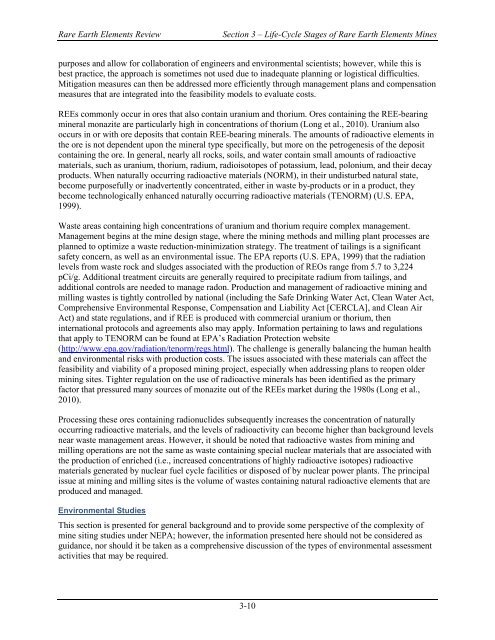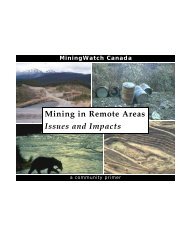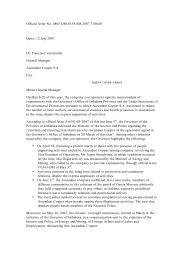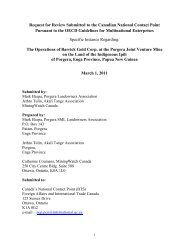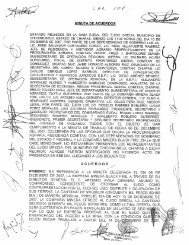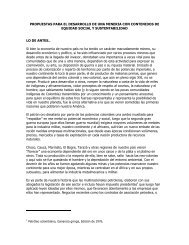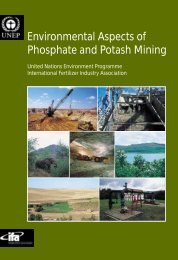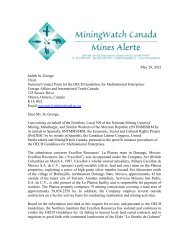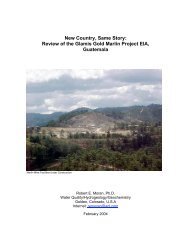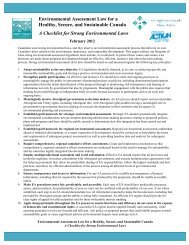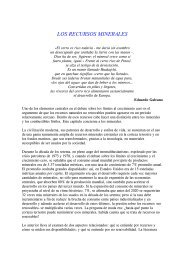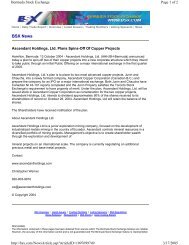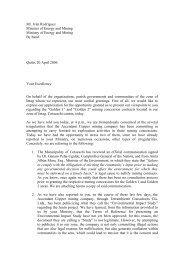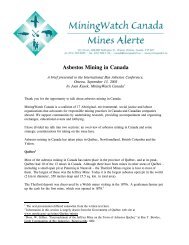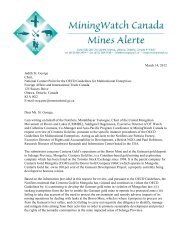Rare Earth Elements: A Review of Production, Processing ...
Rare Earth Elements: A Review of Production, Processing ...
Rare Earth Elements: A Review of Production, Processing ...
Create successful ePaper yourself
Turn your PDF publications into a flip-book with our unique Google optimized e-Paper software.
<strong>Rare</strong> <strong>Earth</strong> <strong>Elements</strong> <strong>Review</strong><br />
Section 3 – Life-Cycle Stages <strong>of</strong> <strong>Rare</strong> <strong>Earth</strong> <strong>Elements</strong> Mines<br />
purposes and allow for collaboration <strong>of</strong> engineers and environmental scientists; however, while this is<br />
best practice, the approach is sometimes not used due to inadequate planning or logistical difficulties.<br />
Mitigation measures can then be addressed more efficiently through management plans and compensation<br />
measures that are integrated into the feasibility models to evaluate costs.<br />
REEs commonly occur in ores that also contain uranium and thorium. Ores containing the REE-bearing<br />
mineral monazite are particularly high in concentrations <strong>of</strong> thorium (Long et al., 2010). Uranium also<br />
occurs in or with ore deposits that contain REE-bearing minerals. The amounts <strong>of</strong> radioactive elements in<br />
the ore is not dependent upon the mineral type specifically, but more on the petrogenesis <strong>of</strong> the deposit<br />
containing the ore. In general, nearly all rocks, soils, and water contain small amounts <strong>of</strong> radioactive<br />
materials, such as uranium, thorium, radium, radioisotopes <strong>of</strong> potassium, lead, polonium, and their decay<br />
products. When naturally occurring radioactive materials (NORM), in their undisturbed natural state,<br />
become purposefully or inadvertently concentrated, either in waste by-products or in a product, they<br />
become technologically enhanced naturally occurring radioactive materials (TENORM) (U.S. EPA,<br />
1999).<br />
Waste areas containing high concentrations <strong>of</strong> uranium and thorium require complex management.<br />
Management begins at the mine design stage, where the mining methods and milling plant processes are<br />
planned to optimize a waste reduction-minimization strategy. The treatment <strong>of</strong> tailings is a significant<br />
safety concern, as well as an environmental issue. The EPA reports (U.S. EPA, 1999) that the radiation<br />
levels from waste rock and sludges associated with the production <strong>of</strong> REOs range from 5.7 to 3,224<br />
pCi/g. Additional treatment circuits are generally required to precipitate radium from tailings, and<br />
additional controls are needed to manage radon. <strong>Production</strong> and management <strong>of</strong> radioactive mining and<br />
milling wastes is tightly controlled by national (including the Safe Drinking Water Act, Clean Water Act,<br />
Comprehensive Environmental Response, Compensation and Liability Act [CERCLA], and Clean Air<br />
Act) and state regulations, and if REE is produced with commercial uranium or thorium, then<br />
international protocols and agreements also may apply. Information pertaining to laws and regulations<br />
that apply to TENORM can be found at EPA’s Radiation Protection website<br />
(http://www.epa.gov/radiation/tenorm/regs.html). The challenge is generally balancing the human health<br />
and environmental risks with production costs. The issues associated with these materials can affect the<br />
feasibility and viability <strong>of</strong> a proposed mining project, especially when addressing plans to reopen older<br />
mining sites. Tighter regulation on the use <strong>of</strong> radioactive minerals has been identified as the primary<br />
factor that pressured many sources <strong>of</strong> monazite out <strong>of</strong> the REEs market during the 1980s (Long et al.,<br />
2010).<br />
<strong>Processing</strong> these ores containing radionuclides subsequently increases the concentration <strong>of</strong> naturally<br />
occurring radioactive materials, and the levels <strong>of</strong> radioactivity can become higher than background levels<br />
near waste management areas. However, it should be noted that radioactive wastes from mining and<br />
milling operations are not the same as waste containing special nuclear materials that are associated with<br />
the production <strong>of</strong> enriched (i.e., increased concentrations <strong>of</strong> highly radioactive isotopes) radioactive<br />
materials generated by nuclear fuel cycle facilities or disposed <strong>of</strong> by nuclear power plants. The principal<br />
issue at mining and milling sites is the volume <strong>of</strong> wastes containing natural radioactive elements that are<br />
produced and managed.<br />
Environmental Studies<br />
This section is presented for general background and to provide some perspective <strong>of</strong> the complexity <strong>of</strong><br />
mine siting studies under NEPA; however, the information presented here should not be considered as<br />
guidance, nor should it be taken as a comprehensive discussion <strong>of</strong> the types <strong>of</strong> environmental assessment<br />
activities that may be required.<br />
3-10


